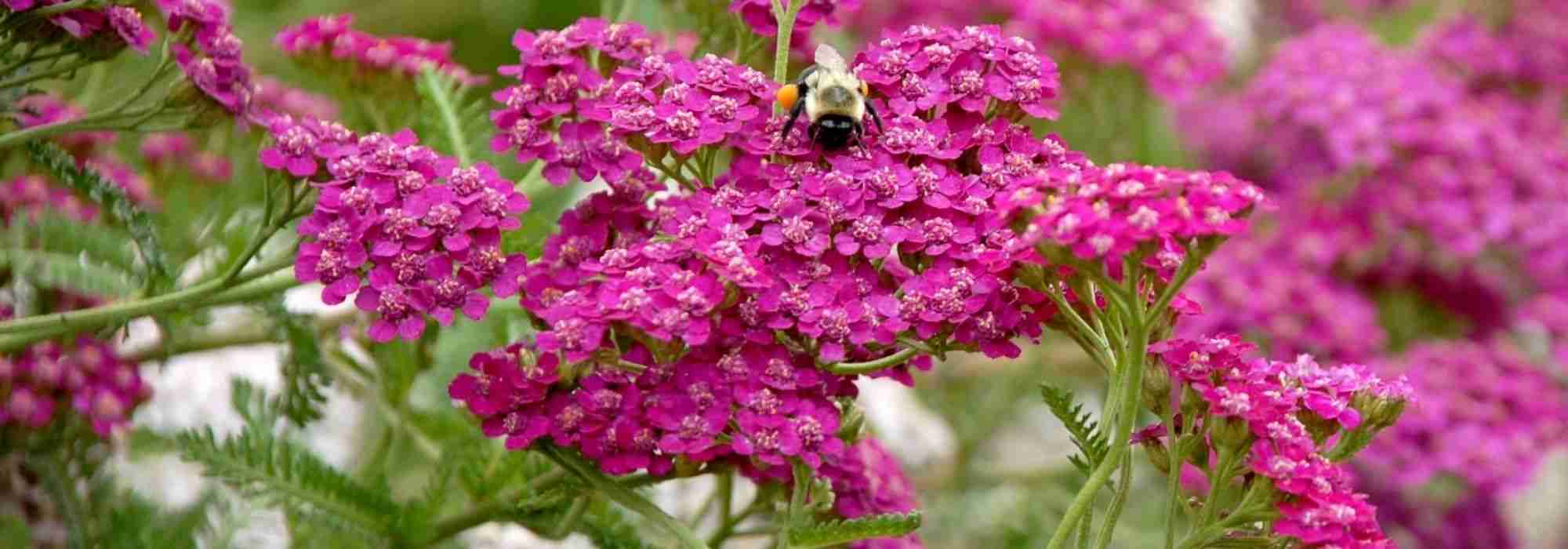
How to choose an achillea?
Our tips for finding the ideal variety
Contents
Theyarrow is a perennial with colourful flowering throughout the summer. Easy to grow, it is robust and resilient, and excellent in herbal tea!
Thirsty for sun and drought-resistant, it is a perfect candidate for Mediterranean gardens. However, it also integrates well into other gardens, in borders, rockeries, or at the front of a shrub hedge. It thus adds its lovely natural and rustic touch.
Red, yellow, or white yarrow, flowering period, leaf characteristics, pruning, or even garden uses… Let’s see how to choose a yarrow based on these different criteria and find the perfect variety!
Based on the colour of the flowers
Achilleas showcase a rich array of colours. While the white varieties are among the most common, also discover the charm of pink, red, orange, yellow, or mauve varieties. More surprising, the multicoloured flowering achilleas will bring even more dynamism to the garden.
Yellow Achillea
True little suns in borders, beds, or rockeries, yellow achilleas will add an essential touch of light. Sometimes considered more challenging to pair, they will blend very well with plants that have complementary blue or purple flowers, or in a vibrant yellow-orange colour scheme.
The very soft Achillea millefolium ‘Hymne’ is adorned with a sulphur yellow with cream undertones; Achillea hybrid ‘Little Moonshine’ offers a radiant bright yellow, just like Achillea tomentosa; Achillea filipendulina ‘Cloth of Gold’ leans towards golden yellow shades, like ‘Golden Plate’; Achillea taygetea offers a more nuanced yellow, leaning towards lemon.
Red Achillea
Red achilleas are ideal for bringing vitality and brightness to the garden. The red comes in all its shades here, from the palest to the brightest, such as:
- the beautiful Achillea millefolium ‘Paprika’, which transitions from yellow-centred red to orange-red
- ‘Pomegranate’, which produces deep garnet red flowers
- ‘Petra’, which boasts a nearly raspberry red
- ‘Red Beauty’, favouring a red that evolves towards purplish hues
- the stunning ‘Peggy Sue’, offering bright red flowers illuminated by a white centre
- the velvety red of ‘Red Velvet’, which retains its vibrancy without fading throughout the flowering period
- ‘Summerwine’, which graces us with a red with violet notes, evolving to pink and then brown-yellow
White Achillea
The white colour is the most widespread among achilleas. It undeniably brings a lot of lightness and freshness to the garden.
Among our favourite varieties, we can mention:
- the Achillea millefolium ‘Schneetaler’, with white flowers highlighted by a cream centre
- ‘White Beauty’, for its white flowering with a butter-yellow centre
- ‘Achillea umbellata’, with its flowers featuring a yellow-cream centre
- Achillea ptarmica ‘Boule de Neige’, illuminated by a yellow centre
- Achillea ptarmica ‘Perry’s White’, offering an entirely immaculate white flowering
Pink Achillea
From the most delicate pink to the brightest pink, the colour palette of these achilleas will satisfy all tastes:
- the Siberian achillea camtschatica ‘Love Parade’ offers small pale pink flowers
- the Achillea millefolium ‘Saucy Seduction’ prefers a bright pink
- ‘Jacqueline’ offers a very fresh soft pink
- ‘Lilac Beauty’ is adorned with pink-lilac shades
- ‘Cerise Queen’ does not go unnoticed with its cherry pink and white centre
- ‘Velours’ showcases fuchsia pink flowers
- the colour of ‘Wonderful Wampee’ evolves, changing from bright pink to pale pink as it fades
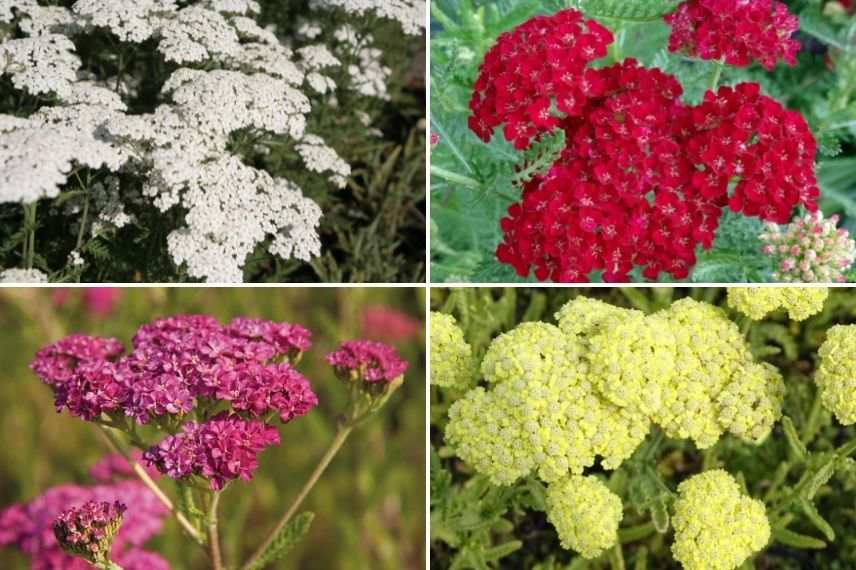 Achillea ‘Schneetaler’, ‘Pomegranate’, ‘Velours’, and ‘Taygetea’.
Achillea ‘Schneetaler’, ‘Pomegranate’, ‘Velours’, and ‘Taygetea’.
Other Interesting Colours
There are also less common, but equally beautiful colours among achilleas. This is the case for:
- the Achillea millefolium ‘Excel’, which showcases the most rare violet shades
- ‘Terracotta’, with its orange to cream colour in an exotic style
- the ‘Desert Eve Terracotta’, with a caramel-orange flowering
- ‘Peachy Seduction’, featuring a peach-rosy colour
- ‘Salmon Beauty’, whose name refers to its salmon-pink flowers
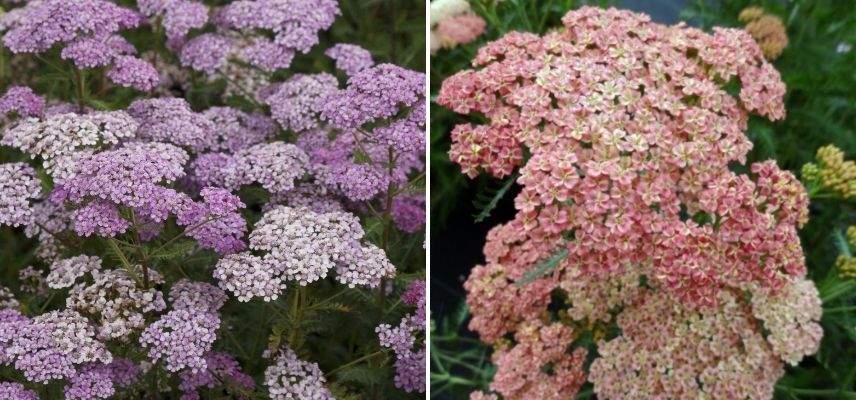 Achillea ‘Peachy Seduction’ and ‘Excel’
Achillea ‘Peachy Seduction’ and ‘Excel’
Multicoloured Flowering Achilleas
For a touch of originality in the garden, adopt multicoloured flowering achilleas.
The Achillea millefolium ‘Summer Pastels’ offers a magnificent summer display. As its name suggests, it indeed showcases a gradient of pastel colours, ranging from pink to yellow, passing through a soft apricot.
The Achillea millefolium ‘Apricot Delight (Tutti Frutti)’ features a flowering with changing shades over the days, varying from pink to pale apricot, then reddening as it fades.
Finally, ‘Feuerland’ displays fiery hues, transitioning from bright blood red to vivid orange, then to a softer apricot yellow. As for ‘Walter Funcke’, it offers equally warm colours, evolving from coral red to peach, from orange to brick red, fading to a delicate cream.
Based on the shape of the flowers
Achilleas have corymb inflorescences, consisting of a multitude of very small flowers densely grouped together. Most of them are single, with about 5 petals.
However, some varieties offer us beautiful double flowers with abundant petals. This is the case with Achillea ptarmica ‘The Pearl’ also known as ‘silver button’ in reference to its large, well-formed white pompom flowers. Achillea ptarmica ‘Boule de Neige’ has the same advantages, with its double flowers resembling snowflakes, revealing a more visible yellow centre.
In Achillea filipendulina ‘Parker’s Variety’ and ‘Helios’, the flowers have the particularity of being rounded, giving the whole a rather unusual globular appearance.

Achillea ‘Lachsschönheit’, ‘The Pearl’ and ‘Parker’s Variety’
Discover other Achillea
View all →Available in 0 sizes
Available in 1 sizes
Available in 1 sizes
Available in 2 sizes
Available in 1 sizes
Available in 1 sizes
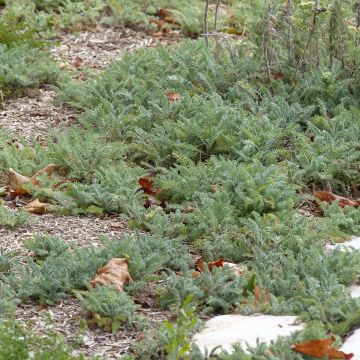
Available in 2 sizes
Available in 1 sizes
Available in 2 sizes
Available in 2 sizes
According to the flowering period
The flowering of achilleas lasts all summer, typically from June to September. However, some early or late varieties allow us to enjoy the display even longer in the garden.
Among the early flowering varieties that bloom a few weeks before the others, we find the hybrid Achillea ‘Little Moonshine’, ‘Desert Eve Red’, and ‘Desert Eve Terracotta’, which brighten the garden from May until August-September.
The Achillea umbellata and Achillea kellereri offer a spring flowering, from April to early June, depending on the regions.
For varieties that flower a bit later but continue into early autumn in October, we can mention Achillea filipendulina Golden Plate, Achillea millefolium ‘Pomegranate’, or ‘Red Velvet’.
For a flowering period of nearly 5 months, the prize goes to the millefeuille achilleas ‘Paprika’, ‘Cerise Queen’, ‘Peachy Seduction’, and ‘Wonderful Wampee’.
Read also
Achillea : plant, cultivate and maintainBased on its fragrance
If the foliage of yarrow is aromatic when crushed, their flowers are not known for their fragrance. Most varieties indeed do not emit any scent when blooming.
However, there are a few exceptions, such as with the filipendula yarrow ‘Credo’, ‘Golden Plate’, ‘Helios’ or ‘Parker’s Variety’, revealing a slightly musky scent.
Decorative foliage varieties
Achilleas generally have very finely divided foliage, with an airy, delicate, and graphic appearance. The common name “yarrow” is well-deserved, as the cut of its leaves gives the impression of a multitude of small leaves.
In terms of colours, we find silver-grey, several shades of green, or even white.
Some varieties have other characteristics, such as downy leaves or entire leaves. Generally deciduous, the foliage disappears during winter. However, some evergreen varieties retain their leaves even during the cold season, such as:
- Achillea umbellata with bright silver dentate foliage that turns white in summer
- Achillea crithmifolia featuring soft leaves of a lovely grey-green
- Achillea ‘Credo’, with light foliage reminiscent of ferns
- Achillea tomentosa, whose grey-green leaves are covered in white down throughout the seasons
- Achillea kellereri, with light feathery foliage that transitions from silver to white
Achillea filipendulina ‘Golden Plate’ stands out with its feather-like leaves of vibrant green, while the achilleas ‘Cerise Queen’ and ‘Hoffnung’ boast beautiful dark green foliage that contrasts well with their flowering.
→ Read also: Green-leaved achilleas: how to use them and enjoy their benefits in the garden? and our advice sheet on evergreen achilleas for a beautiful garden all year round.
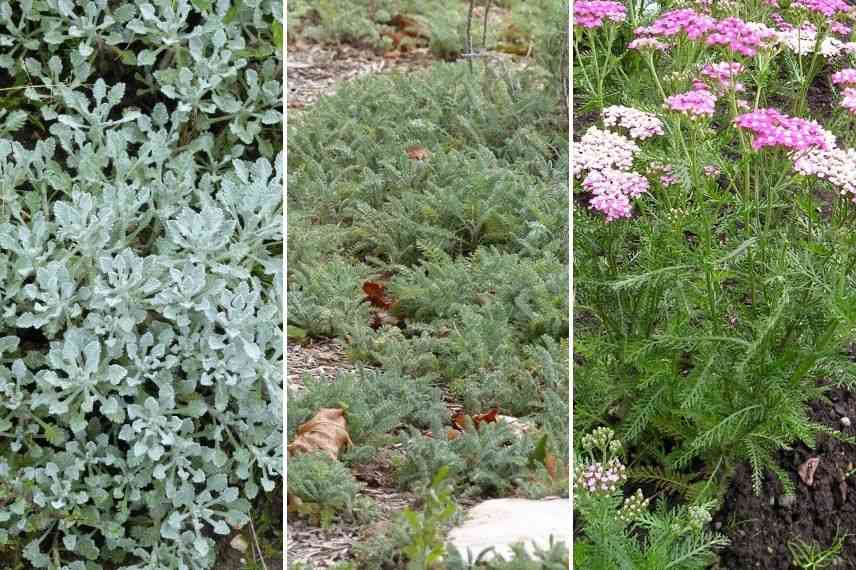
Achillea umbellata, Achillea crithmifolia, and the variety ‘Cerise Queen’ (photo Anna)
According to its size or use
The height of yarrow depends on the varieties, but it generally ranges from about 15 centimetres for the smallest to just over a metre for the tallest.
On average, most of these perennials measure between 50 and 80 cm in height.
The smallest varieties
These small creeping yarrows, barely exceeding 20 cm in height, are ideal as ground covers. They can thus cover a slope, dress the bases of bushes, or be placed in the foreground of borders.
This is the case for Achillea tomentosa (25 cm in height and 30 cm in spread), Achillea ageratifolia (15 cm in height and 30 cm in spread), or the ‘Little Moonshine’ hybrid (25 cm in height and 30 cm in spread).
These smaller varieties can be grown in pots. More details in our article: Growing yarrow in pots: our tips.
Larger varieties
These varieties provide more height and are better placed in the middle of borders, behind ground cover plants or those with a lower habit:
- yarrow ‘Feuerland’ (1 metre in height)
- the yarrow filipendulina ‘Cloth of Gold’ (1.2 metres in height)
- Achillea ptarmica ‘Weihenstephan’ (1.2 metres in height)
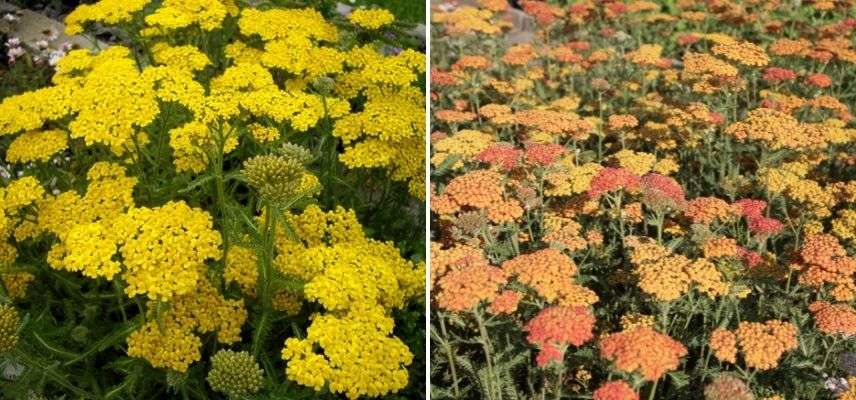
Achillea tomentosa (photo Ghislain) and Achillea millefolium ‘Feuerland’
According to the constraints of the garden
Achilleas thrive in sunny locations, sometimes in partial shade in regions with the hottest summers. Some varieties adapt very well to drought, while others exhibit excellent cold resistance.
Soil Types
The achillea is renowned for its ability to thrive in even the poorest, sandy, dry, and rocky soils.
However, a few varieties can develop in heavier, clayey or clay-limestone soils if they are well-drained, such as Achillea crithmifolia, Achillea ptarmica ‘Xana‘, or achillea taygetea, which tolerate all types of soil.
The Hardiest Varieties
The achillea often displays hardiness down to -15°C, allowing it to be grown in the vast majority of regions.
In climates with the harshest winters, opt for even more resilient varieties, such as the yarrow ‘Alabaster’, ‘Lachsschönheit’, or ‘Sammetriese’, which tolerate low temperatures beyond -15°C.
- Subscribe!
- Contents
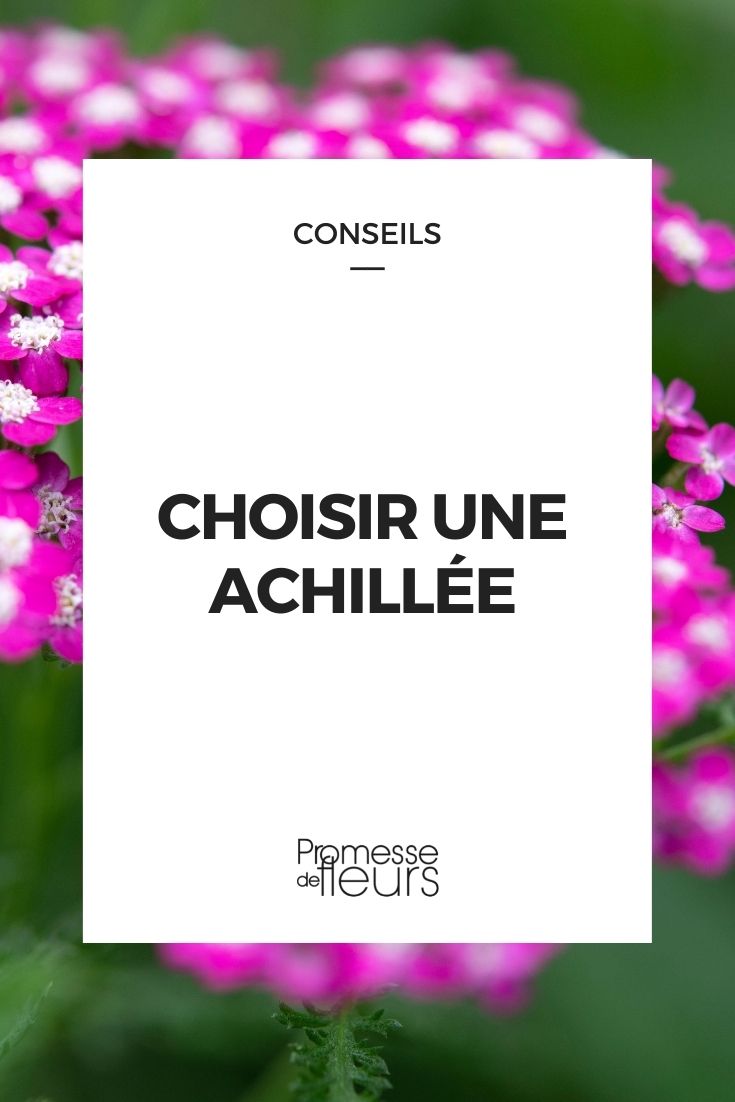































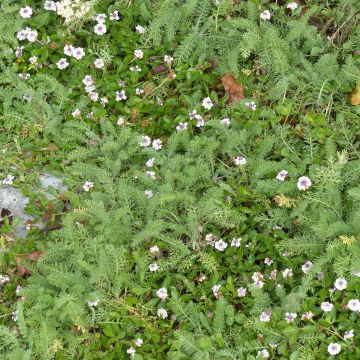
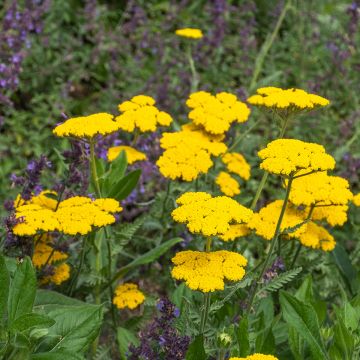
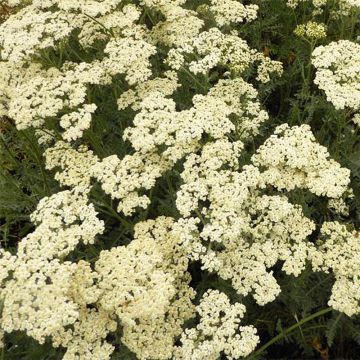
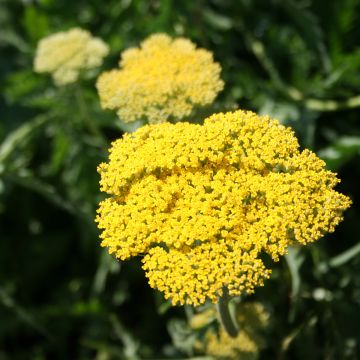
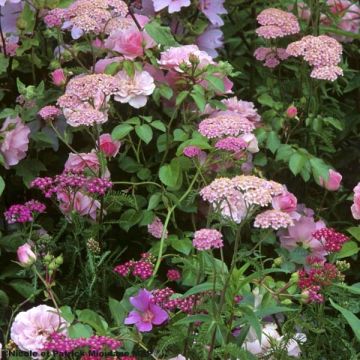
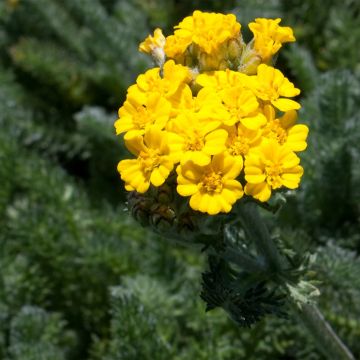
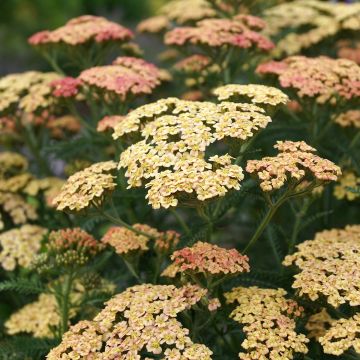
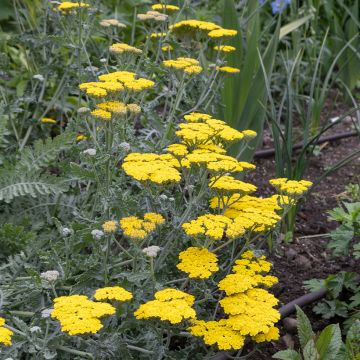
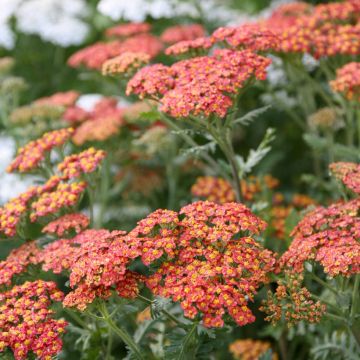
Comments